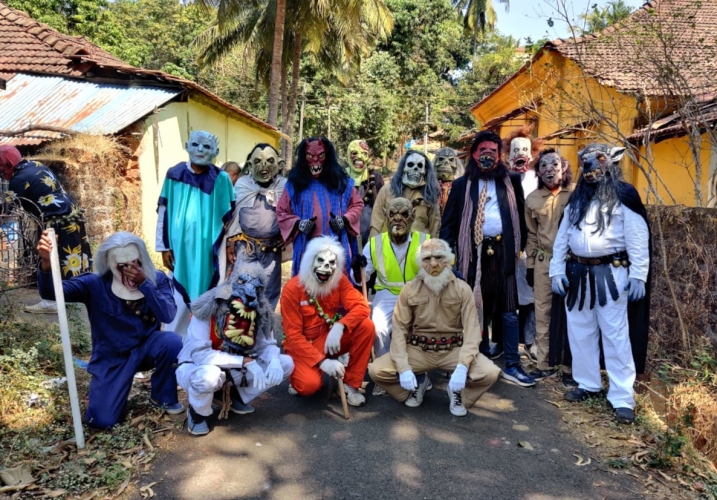
Divar Island, almost triangular in shape, is situated along the Mandovi River, 10 km from Panaji. On the western side is Ribandar while on the southeast is Old Goa, and Narve is located towards the north. Ferry services connect these places with Divar Island.
There are quite a few legends regarding the origin of the name of Divar. According to one legend, the name Divar is derived from Devallem or Devola, meaning Hindu temples. Another legend speaks of the name coming from Dipavatti – Dip meaning lights and vatti, a village. Yet, another maintains that the name came from Devipavatti, a place (vatti) surrounded by many islands.
Initially, the island had 3 villages: Piedade, São Matias (Malar) and Goltim. The Piedade Comunidade was subdivided into two, Goltim and Navelim.
According to a legend, the original inhabitants of this island were people who once lived in Old Goa but had to desert the village during a plague epidemic that heavily decimated the population of Old Goa.
The two popular feasts of Divar are Bonderam Festival and Potekar or ‘Mone’ (literally denoting dumb) Festival, which draw people from all over Goa. The word ‘Potekar’ in Konkani means shabby, hence, the title Potekar Festival or Shabby Festival.
The name mirrors the fancy dress of men in costumes and masks on the festival day. This unique festival of the Divarkars is similar to the western concept of Halloween celebrated during the autumn fall.
THE FESTIVAL
The Potekar festival, a speciality of the Divarkars, began during the pre-Portuguese era. It is a three-day festival before Ash Wednesday, and many islanders love to be part of it. The Potekar festival coincides with the Carnival festival when King Momo decrees 3 days of fun and merriment. It is also a fun-loving festival where families and friends cook and make merry together, bringing the entire village together.
THE ORIGIN
The origin of the Potekar festival is mixed with folk tales and hoary legends. In fact, there is a long thread of beliefs behind the festival. The tradition is related to the customs and traditions practised by village communes, known as Gaunkars. Their way of life is described as ‘ganvponn’. Though this festival may seem to be superstitious, some say it had an educational purpose as children were taught moral values and good behaviour while the elders laughed seeing the ‘frightful’ figures.
Others say that in the past, some people used to sweep the compounds and demand a reward. Yet, others believe that people roamed the village in falsetto voices to hide their identity from being mocked by the youth.
THE CELEBRATION
There is no specific programme during these three festive days. The islanders, dressed in themes, costumes of animals, and home-made and hand-painted masks, roam around the village carrying a sack. They also wear cowbells on their ankles and around their waists, the ringing of which can be heard across great distances. Crowds are unable to recognise them due to their change in voice and mannerisms.
When they visit homes, people offer food and beverages like goddxem (sweet dish), beer and sometimes even lunch. When children see them or hear the bells jingling, they run for their lives.
In the past, only men would dress in scary costumes but recently girls also participate enthusiastically. Earlier, the entire festival was known as a creepy scary festival but as years rolled on, children were no longer scared by the weird figures.
The festival encourages the youth to take part in it which in turn makes the atmosphere lively and fun-filled. In Divar, the Potekar tradition, albeit with some difference, has remained up to this day.
(The writer is former director of Thomas Stephens Konknni Kendr at Porvorim)